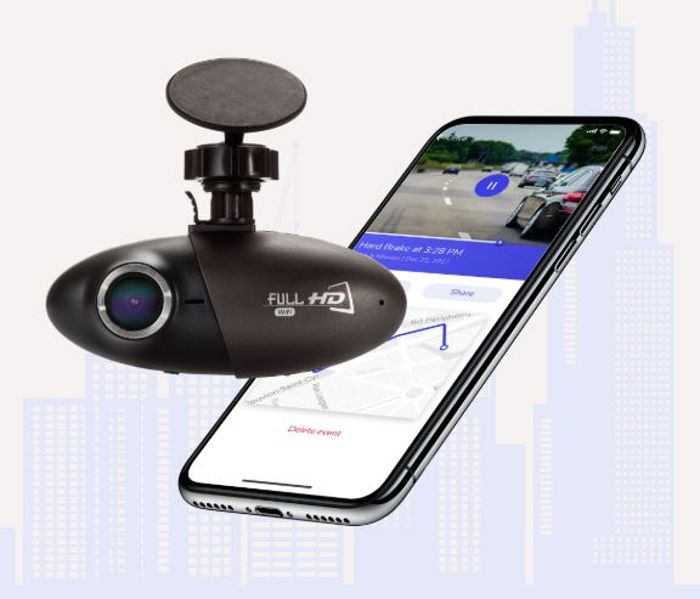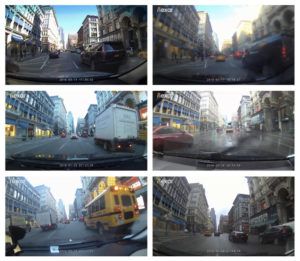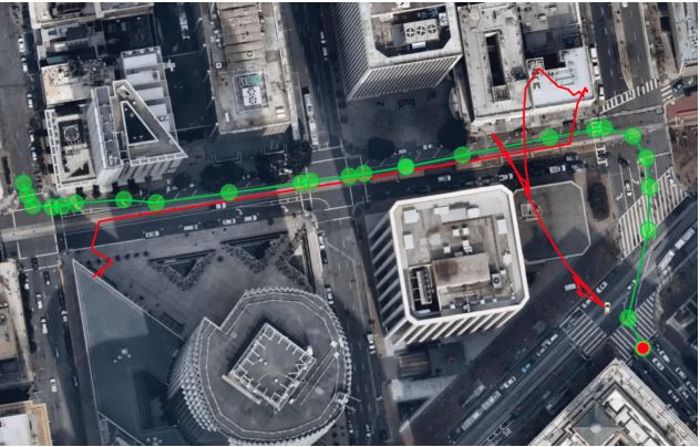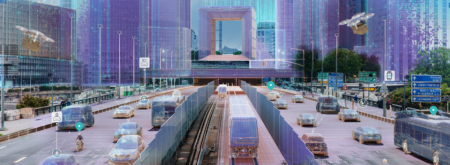Israeli company Nexar, which is developing a connected vehicle network based on data collected from dash cameras and a twinned smartphone application, is unveiling a scalable method that greatly improves GPS location accuracy in urban areas.
The connected mobility company is showcasing its innovative approach at the annual Computer Vision and Pattern Recognition Conference (CVPR), which is taking place in Long Beach, California from June 16-20. As a benchmark to evaluate this new approach, Nexar is also releasing a dataset and benchmark based on anonymized dash-cam and GPS information from its connected vehicle network to advance the research of visual localization for safety applications. By pairing Nexar-powered dash cameras with the Nexar app, drivers join the company’s global safe-driving network, where every vehicle is alerted to what is happening on the road ahead with the help of other vehicles around it. The system helps share information about crashes, traffic congestion, closed lanes, and dangerous road conditions ahead, with the aim of eliminating collisions worldwide.

In order to deliver these critical alerts, Nexar needs an efficient and accurate way of knowing in real-time exactly where vehicles are on the road. In dense urban environments, GPS is highly inaccurate as satellite signals are often blocked or reflected by high-rise buildings, creating ‘urban canyons’, which poses a critical challenge for vehicle-to-vehicle (V2V) safety applications. Nexar says its new AI-powered image retrieval algorithm will dramatically improve localization in cities, solving a problem that has long-plagued both rideshare operators and navigation apps, as well as autonomous vehicle manufacturers. Nexar’s research of crowd-sourced data of over 250,000 driving hours in New York City found that at least 40% of rides suffered GPS errors of 33ft (10m) or more due to the urban canyon effect.
 Nexar’s method for localization is based on its continuously growing database of fresh road imagery observed by its network that currently indexes over 10 billion new road images per month. The new system solves the challenges presented by other mapping companies, such as Google, which can use a vast Street View image repository, but lack the minute-level freshness that Nexar provides. To solve the failings of satellite positioning, Nexar has developed a hybrid coarse-to-fine approach that makes use of visual and GPS location cues. The company has trained a deep learning model to identify a driver’s accurate location using its massive archive of anonymized images gathered from more than 400 million miles driven on the Nexar network.
Nexar’s method for localization is based on its continuously growing database of fresh road imagery observed by its network that currently indexes over 10 billion new road images per month. The new system solves the challenges presented by other mapping companies, such as Google, which can use a vast Street View image repository, but lack the minute-level freshness that Nexar provides. To solve the failings of satellite positioning, Nexar has developed a hybrid coarse-to-fine approach that makes use of visual and GPS location cues. The company has trained a deep learning model to identify a driver’s accurate location using its massive archive of anonymized images gathered from more than 400 million miles driven on the Nexar network.
“This new localization method makes it possible for us to deliver on our founding promise, which is to help rid the world of collisions,” explained Nexar’s co-founder and chief technology officer, Bruno Fernandez-Ruiz. “And the benefits will go far beyond our network; this approach could one day allow autonomous vehicles to reliably navigate cities. It’s just as accurate and far less expensive than structure-based techniques such as lidar, which are limited in scale and expensive to compute. So, the potential is really tremendous.”





